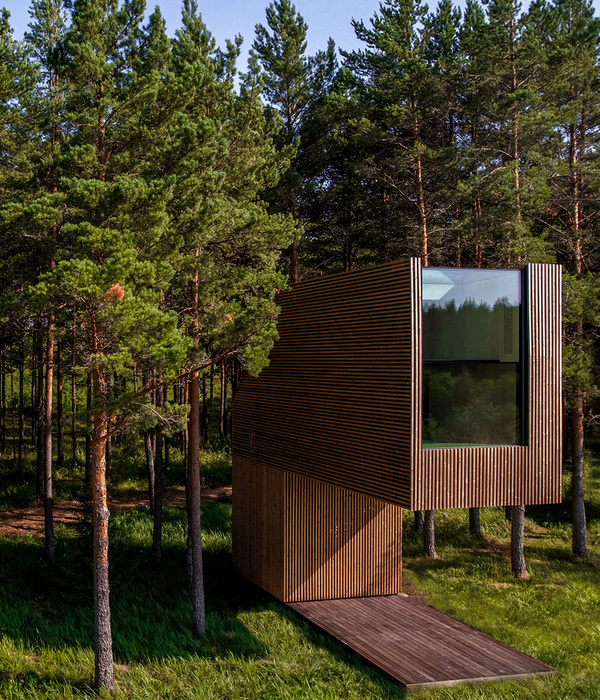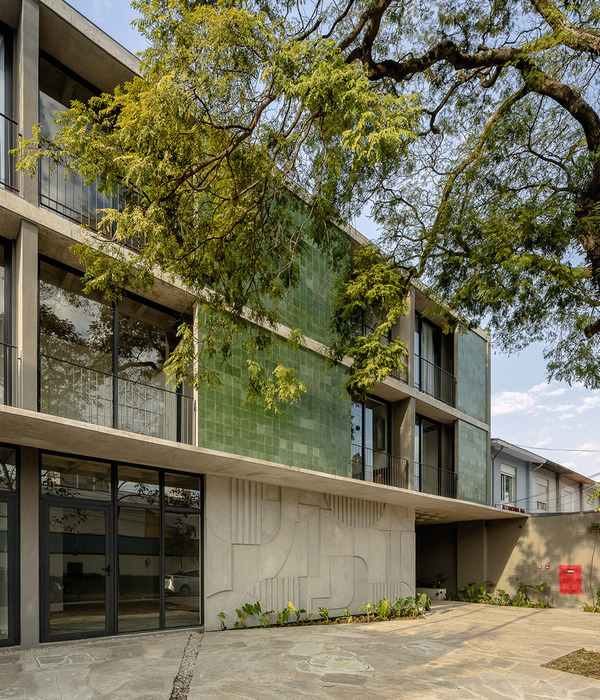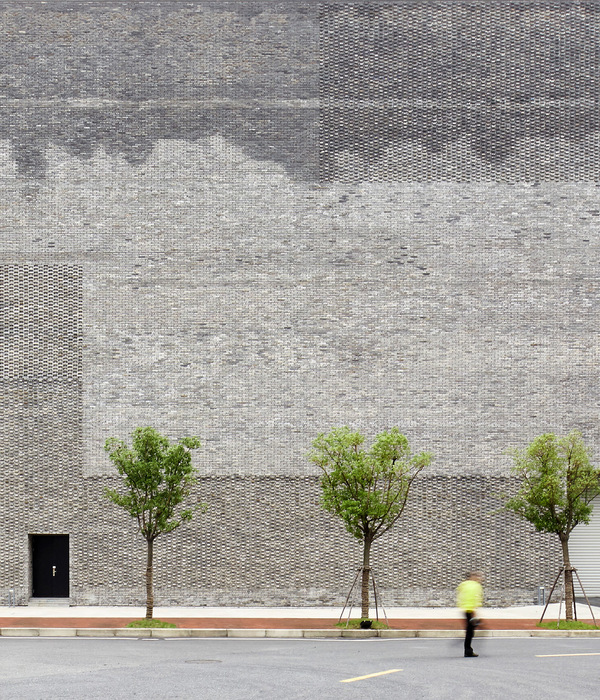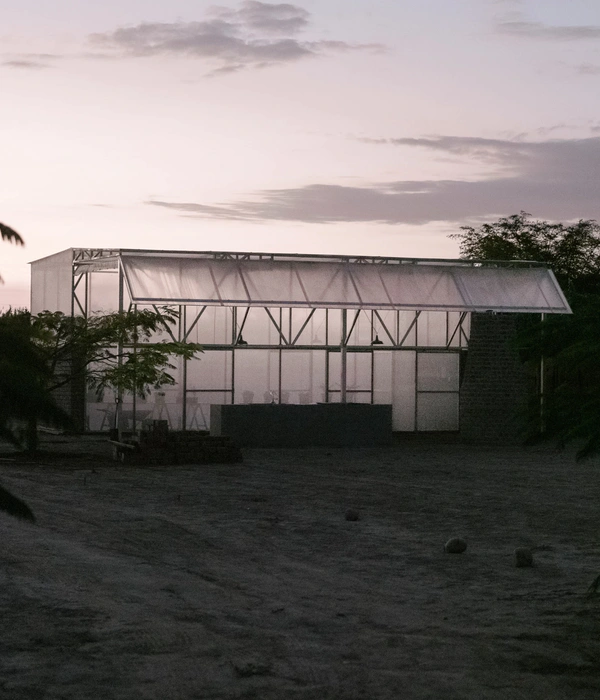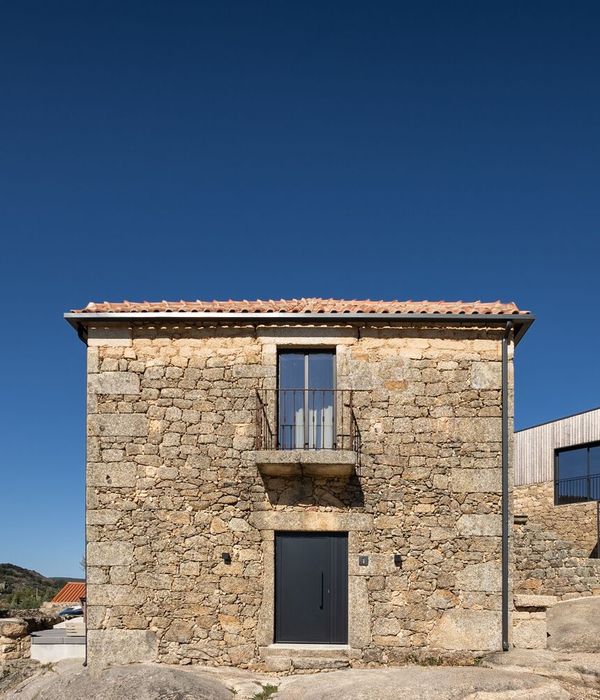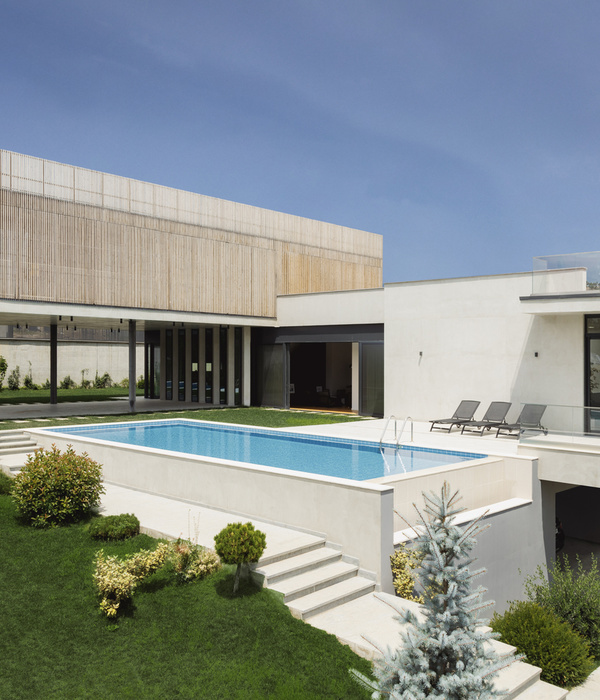In our ongoing content partnership with Brickworks, we’ve been exploring the beauty, versatility and possibilities of Bricks in its many applications, from art, design, interiors and architecture via some of the most radical projects and ideas both in Australia and overseas.
Today’s article brings us to individual homes. Yeah, I hear you – Brick Houses are hardly a radical concept. This is, after all, where we expect to see Bricks used the most. Hold your horses, dear friends – this is Yellowtrace, after all, and we’re going to be visiting 18 Knockout Brick Houses that leave a lasting impression, broken up by various brick styles and colours.
Our journey starts at the beginning, with the humble Red Brick. Oh, I can just feel some of you shiver as you read this. Poor Red Brick got a hammering in post-war years throughout Australian suburbia. Some of us are yet to recover from the dreaded visual of driving down the street and seeing house after house, one apartment block after another sporting lairy red-brick box-forms, basic pitched roofs with minimal overhang, shitty aluminium windows and doors, and all that jazz. Well, this is not where we’re headed today because Red Bricks have come a long way since those days. Hallelujah!
Apart from RBs, we’ll be checking out Masonry, Glass Block, Brown & Grey Brick, and White Brick Houses too, ranging in budget, scope and scale. It turns out the possibilities and the design potential of Bricks is infinite even in residential homes. But you probably knew that already. Let’s get amongst it.
Rabbit Hole House in Gaasbeek, Belgium by Lens°Ass Architecten. Photography by Philippe van Gelooven.
Lens°Ass Architecten’s Rabbit Hole House is the poster girl for Red Brick Houses. If this project doesn’t make you reconsider the potential for the RB, I’m not really sure we should be friends.
Located in rural Belgian town Gaasbeek, this project displays a monolithic use of brick that unifies a series of buildings from floor to roof. The renovation of a dilapidated brick farmhouse into a home and a veterinary practice responds to the contemporary residential needs without destroying the rural character of the existing structure. A brick-lined funnel, dubbed Rabbit Hole, is an annex that connects the two buildings. “Brick is used here not only as a construction material but also as a concept reinforcing the existing structure. It is the binding element between the past and the present,” said Bart Lens.
So good. Although completed some 10 years ago now, this project remains one of my personal favourite brick buildings, if you must know.
Highgate House in London by Carmody Groarke. Photography by Hélène Binet.
For this London family home near Highgate Wood, Carmody Groarke used brick as a sculptural, structural, and contextual device. Although mostly abstract in its use (covering all surfaces inside and out), the bold red brick also connects with the traditional craft embedded in the eclectic architecture of the neighbourhood. The three commanding brick volumes are at once new and old—making up a modern, minimalist home, that’s still rooted in its landscape and local history and in English suburbia.
Find out more about Carmody Groarke’s architectural approach in our article on Kevin Carmody’s Territory of Architecture lecture series in Australia.
Sierra Fría House in Mexico City by Esrawe Studio. Photos by César Béjar.
From the outside, Esrawe Studio’s Casa Sierra Fría in Mexico City seems impenetrable and solid. Its monolithic brick form not exactly welcoming outsiders with open arms. However, upon entering, spaces unfold with a softer tone. Continuously flowing, light-filled rooms creating an introspective oasis for family life within its red brick walls.
The two large volumes wrap themselves around a central courtyard – the green heart of the home. Plants cover the ground, climb up walls and reach for the sky. All of a sudden, occupants are thrust into a different world – the buzz of contemporary life dulled by the soft rustling of leaves.
Explore more of this project here.
Merri Creek House in Melbourne by WOWOWA. Photography by Shannon McGrath.
WOWOWA’s Merri Creek House tagline is “Making the familiar strange & the strange familiar”. Located in the tree-lined street in Melbourne’s Fitzroy North, sprinkled with, as told by the architects “cream & apricot double story triple brick veneer – many with deco waterfall edges and glamorous garages with roof decks above that connect to contribute to a grand entry sequence.” Keen to respond to the “contextual romance”, Merri Creek House presents with its own street-facing deck above the garage.
Celebrating the waterfall features of neighbouring homes, two circular towers cascade along the site as a fresh take on the neighbourhood vernacular. Built by Atma Builders, Merri Creek House features two different types of bricks – Daniel Robertson Traditional in ‘Buff’ externally, and Austral Brick’s Allure in ‘Ariana’ used in the interior.
House 1014 in Granollers, Spain by H Arquitectes. Photography by Adrià Goula.
Situated just outside Barcelona in the old city of Granollers, an redbrickwall spans the gap between two crumbling facades, hiding a home with two courtyards and a central garden designed by H Arquitectes.
Timbergates slide back from the lower storey of the brick facade, into an enclosed patio and Parking area to the rear of House 1014. Two brick patios bracket the family home, offering a sheltered transition from the street on either side of the block, while a further garden splits the space into two distinct halves – one for more private domestic activities, and another for entertainment. Retractable glass and metal roofs cover the patios, capturing heat in winter and providing shade in summer. An original stone facade with ornamental window frames and an arched doorway were preserved to create a pedestrian entrance from a street on the other side of the block. The uneven blockwork of the new facade, with veins of narrow brick running through its regularly arranged rows, references the original irregular stone masonry. The arched doorway in the old facade opens from the main street into a brick-lined outdoor space adjacent to the domestic area, which contains a family kitchen where a lamp with a large metallic hood hangs low over a timbertable.
Explore more of this project here.
Courtyard Villa in Tangshan, China by ARCHSTUDIO. Photography by Wang Ning.
Traditional Chinese courtyard dwellings, known as ‘Siheyuan’, inspired ARCHSTUDIO for Courtyard Villa, on a suburban site in Tangshan, China surrounded by verdant farmland, orchards and rivers. The traditional Siheyuan encompasses inward-facing buildings with closed-off exterior facades arranged around a completely open central courtyard.
ARCHSTUDIO borrowed from this concept, scattering four rooms around a central hall representative of a courtyard. Both the hall and the four rooms are lined in bricks and pavers identical between the exterior and interior facades, creating a cohesive visual flow. In the bedroom, inner ‘yards’ with perforated brick walls allow natural ventilation and further penetration of sunlight. The predominant pitched roof over the central hall is clad with charred timber tiles and ribbed timber beams. The combination of the timber and brick creates a warm ambience, enhanced by lights placed strategically along the framework of the roof.
Explore more of this project here.
Edsall Street House in Malvern by RITZ & GHOUGASSIAN. Photography by Tom Blachford.
The Edsall Street house incorporates two built envelopes, evident from the western elevation that illustrates the clear division as a ’pause’ between ’old’ and ’new’ structures.
The existing heritage frontage is re-established as a white silhouette, maintaining a street presence that’s cohesive with the local area. The second enveloping shell is a monolithic structure expressed as a series of masonry walls that open towards garden spaces with crushed limestone and native flora. Laid by Haydens Bricklaying, Austral Masonry’s GB Smooth Porcelain walls extend past one another spreading space outwards into the garden blending volume and light.
Vikki’s Place in Newcastle by Curious Practice. Photography by Katherine Lu.
Vikki’s Place sits on a small inner-city lot in Newcastle heavily effected by flood-related planning controls, setting the first floor 1.6m above natural ground. A private, north-facing courtyard forms an entry with bleacher-style steps and seating, maintaining a connection between ground and first floor.
Curious Practice embraces the qualities of half-finished structures and ruins. In order to withstand potential flooding, the lower portion of the house is made from strong, robust material – Austral Masonry’s GB Smooth Porcelain. In contrast, the lightweight upper living floor uses warmer and softer finishes. Vicky’s Place features exposed services throughout, and all materials are celebrated in their raw, unfinished state – nothing is clad, hidden or painted, and no plasterboard was used in the interior.
La Scala in Brisbane by Richards & Spence.
Take a tour through La Scala, Richards & Spence’s own Brisbane home. Since establishing their practice in 2008, Ingrid Richards and Adrian Spence have changed the face of their home city with world-class retail, hospitality and civic architecture. They recently completed their bangin’ home in Bowen Hills, which flips the idea of a typical house on its head.
Like all legit works of architecture, this home is designed with longevity in mind – this is a private, domestic building that could one day easily become a gallery or a restaurant. Perhaps, for this reason, La Scala echoes design elements more synonymous with public spaces than a typical house. Central to the idea of longevity and sustainability, the pair have used light-colour masonry in response to Brisbane’s hot climate. Half-height and full-height blocks of GB Honed Porcelain by Austral Masonry in an alternating bond show almost zero evidence of vertical mortar, instead only expressing the horizontal joints that appropriate a stone building.
Explore more of this project and take a video tour here.
House in Buddenturm, Munster by Hehnpohl Architektur.
Hehnpohl Architektur’s Haus am Buddenturm (as in House in Buddenturm – I know, my German is flawless, and you’re welcome) presents as an arresting staggered brick façade. Puuuuhhhhh! That’s the sound of my mind blowing-up right there.
Tightly sandwiched between two heritage buildings, this clearly contemporary house shows a lot of tact by respecting the scale and roof shape of its rather elderly neighbours. The crisp façade is clad in red-brown clinker bricks. Chosen not just for its devastatingly good looks, the texture of hand-moulded bricks fired in a ring kiln creates another visual link to the historic surroundings. In the interior, the concrete was untreated and timber floorboards were laid on sleepers.
Villa Moerkensheide in De Pinte, Belgium by Dieter De Vos Architecten. Photography by Filip Dujardin.
Completed in 2013, this house by Dieter De Vos Architecten sits on the edge of a residential neighbourhood in De Pinte, Belgium, opposite a small forest. An explicit orientation to the sun gave rise to the three-way composition of the houses, with three gardens formally complement the composition, each one intended for a specific time of day – morning, afternoon, evening.
Built as a concrete and blockwork loadbearing structure, the house features a monumental textural façade clad in brickwork of hand-selected peat-fired bricks in Flemish bond. Immense arched windows on the ground floor lighten the building scale and create a sense of visual connection between the three volumes, also connecting the interior and the three gardens.
Henley Clays by Benn & Penna Architects. Photography by Tom Ferguson.
Monolithic brickwork is key to Benn & Penna Architects’ renovation of Henley Clays cottage on Sydney’s Lower North Shore, with 50mm tall Simmentel Silver Austral Bricks forming the new walls and floors. Benn & Penna exactingly matched the mortar colour to the bricks in order to amplify the monumental, landscape-like qualities of the project. Openings were carefully arranged to puncture the mass of the building and ensure the cave-like interiors are awash with natural light. “The mortar joints have been deliberately kept untidy to give the house a more landscape like appearance,” elaborates Andrew Benn.
The predominant use of brick gives Henley Clays a physical quality that is at once robust and earthy, at the same time creating a gentle and contemplative atmosphere throughout the home.
Explore more of this fantastic project here.
York Street Residence by Jackson Clements Burrows. Photography by Derek Swalwell.
Jackson Clements Burrows transformed an existing heritage building by introducing a modern, two-storey addition that playfully reinterprets the distinctive geometry of the original dwelling through a contemporary lens. Capturing abundant natural light and garden aspects, the new addition, built by Belair Builders employs a refined and subtle palette of brick, steel and timber. Jackson Clements Burrow chose Bowral Bricks in Brahman Granite as a contrasting finish to the otherwise light material palette within the home.
There is a clear separation between the existing heritage building and the modern extension. The two buildings are connected via a glazed link screened by hit-miss brickwork and a courtyard that celebrate the existing architecture.
Daylesford Longhouse Residence and Working Farm by Partners Hill. Photography by Shantanu Starick.
Daylesford Longhouse by Partners Hill is something special to behold. The property encompasses a boutique farm, garden kitchen, cooking school, reception venue and a home, within a single 110-metre linear shed. Internalising all agricultural and hospitality activities under one expansive roof provide a purpose-aligned container for living, learning and entertaining as well as nurturing animals and fresh produce.
Partners Hill use radical contrasts to demarcate internal spaces, such as giant vs. petite, agricultural vs. refined, hard with romantic and tactile. Materials are largely pragmatic and robust, with Australian Cypress Pine used for barn doors, walls, surfaces, planters, seating and decking due to its resilience to rot. Both raw clay bricks and glazed bricks from Austral Bricks Burlesque range laid with contrasting mortar define the bathing pavilion, lookout area and kitchen enclosure.
Explore more of this project here.
Bangalley House in Avalon Beach by Casey Brown Architecture. Photography by Michael Nicholson.
Inspired by its dramatic location on a rising monolithic headland of sandstone and shale, Casey Brown Architecture’s Bangalley House was designed to respond to the site with a rustic rugged exterior and a raw but highly crafted interior.
Briefed by a couple of empty nesters to ‘do the site justice’, ‘be part of nature’ and to ‘last 100 years’, the house presents as five interlinked pavilions that open up to the view. The scale, form and chosen materials seek to work with the terrain; cantilever terraces and balconies, exposed hoods and deep recessed openings ensure light and shade enhance the modulated facades.
The raw materiality directly responds to the brief. The architects chose Austral Bricks San Selmo Corso in Brenta Raw and Potenza Textured in 250x40mm size, with additional custom colours and formats also in use. Externally, smoky burnt grey/black bricks blend with the weathered sandstone surrounds, while internally, white bricks create an ever-changing play of patterns and light as the sun moves around the building.
Il Duomo House in Carlton North by WOWOWA. Photography by Martina Gemmola. Styling by Ruth Welsby.
WOWOWA’s client asked for a light-filled, optimistic, flexible, storage-filled and playful house. The architects set out to transform the Victorian workers cottage in North Carlton into a home where good life could unfold with “wine, orecchiette, torn bread, muscatels and cheese wheels”. Built by La Trobe Building Services, the house features a terrarium-like courtyard, referencing the octagonal geometry of the cathedral ceiling of the original home.
The Florentine façade informed the colour scheme of pink, white and green, with a punchy pink, black & green terrazzo extending from inside and out to maximise the feeling of space of the tiny urban block. In a similar vein, Austral Bricks’ La Paloma in Miro (off white) adds an element of crispness, while allowing the light to reflect and trick the eye in creating a feeling of extended volume.
Casuarina House by Vokes & Peters. Photography by Christopher Frederick Jones.
In typical and inimitable Vokes & Peters’ style, this family home breaks the boundary between the house and the nature surrounding it. Built by SJ Reynolds Constructions and described by the Brisbane-based practice as “a compact house in a large garden”, this home has a series of interconnected living spaces with a central double-height volume that’s entirely open to the sky. This gesture delivers a home that feels profoundly connected to the elements and nature.
The upstairs bedrooms are protected by rusty red timber screens and operable oversized louvres. These which sit in contrast with the light brick base constructed from Bowral Bricks in Chillingham White, chosen as a perfect material for building “walls in the garden”.
Brick House in Darlinghurst by Tribe Studio. Photography by Katherine Lu.
Like Dr Who’s fabled Tardis time machine, this reworked inner-city Sydney home in a historic brick substation packs a whole lot into a tiny, constrained, less-than-50-sqm footprint that reveals little from the outside.
The three-bedroom home with a rooftop terrace and swimming pool celebrates the “brickey-ness of the building and recall its past as an electrical substation by extruding the brick form upwards in glass blocks,” explains the team. The top of the building now glows like a lantern at night when the lights are on, and by day, it rests politely, familiarly, yet slightly unsettlingly, among its neighbours.
Tribe Studio relished the opportunity to explore the modularity, solidity and methods of translucency, resulting in a careful exploration of the nature of brickwork – a play between the old bricks, Austral Bricks’ exquisite glass bricks from Venice, and a language of brick screens over the new windows.
By the way, if you’re hot for glass blocks, or if you’re unsure glass block is the best thing since sliced bread (or artisanal sourdough or excellent gluten-free bread, if you’re so inclined), then you definitely need to check out this article for a while lot more inspiration. You’re totes most welcome.
Over and out! X
This Yellowtrace Promotion is proudly created in partnership with Brickworks. All related thoughts and ideas reflect our genuine opinion. Like everything we do at Yellowtrace, our sponsored content is carefully curated to maintain utmost relevance to our readers.
{{item.text_origin}}

